Onion planting techniques explained in detail
In a nutshell, the explanation of the onion planting process is carried out in the following way:
1. Land selection, soil preparation and sowing: select plots with loose soil, fertile soil and good drainage. Soil preparation, fertilization, selection of fine varieties, timely sowing, sowing and applying sufficient base fertilizer and watering through water, and then spraying new high-fat film soil surface after soil preparation can protect moisture and evaporation, sun and drought resistance, heat preservation and freezing, soil layer hardening, suffocation and isolation of diseases and insect sources, and improve the emergence rate.
2. Fertilization, watering, weeding, prevention of diseases and insect pests; watering is moist at any time, reasonable fertilization, weeding, spraying targeted pest prevention drugs plus new high-fat film, greatly improving the utilization rate of effective ingredients of pesticides and fertilizers, not afraid of sun exposure and evaporation, can adjust the absorption of water-saving, drought and rain prevention.
3. When the onions are harvested, prepare the onions for harvest. Then start selling onions according to the market situation.
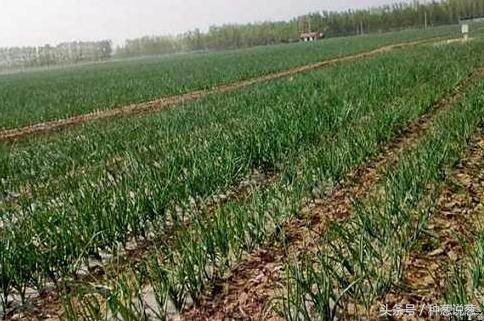
Onion field
So specifically, what do you do when growing onions?
I. sowing at the right time
1. Onion sowing is generally before and after the Beginning of Autumn, the method can be strip sowing or sowing, it is required to sow evenly, the seed consumption per hectare is about 1.8kg-2.25kg (increase or decrease according to the germination rate), and the seedling bed can be used for transplanting seedlings of about 15 hectares per hectare.
two。 Seedling management. The onion seedling stage is about 7-10 days, when most of the onions are irrigated according to soil moisture after emergence, 2 leaves can be combined with ploughing and weeding to apply 105-108 kg / ha of urea, and then irrigated. Water is usually irrigated every 10 days.
two。 Pseudo-planting of onion seedlings
1. In the middle of November, green onion seedlings of the same quality were tied into small handfuls, rootless and too short seedlings were removed, rows of green onions were placed in the shade, and a full row was set up in the base of onion seedlings to the middle and upper part of Yong good wet soil. then stand the second row and then fake planting in Yong wet soil over the winter.
two。 Soil treatment. In the following year, onion planting plots should carry out chemical soil treatment of underground pests and weeds before winter, and pour through winter water. Soil treatment of underground pests can be sprayed with phoxim EC 3750-6000 ml per hectare (due to its visible light decomposition, it should be carried out in the evening), and evenly turned into the soil, or 5% methyl mixed with phosphorus granules should be evenly applied into the soil. Weed soil treatment can be sprayed with 2250 ml of herbicide or 48% trifluralin per hectare, 2250-3000 ml of Acetochlor or 1875-2250 ml of Caicaotong, and evenly turned into the soil.
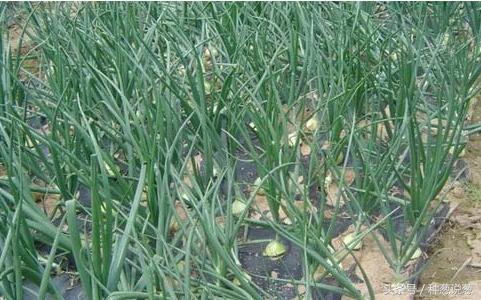
Onion planting
Third, apply sufficient base fertilizer and plant closely in a reasonable way.
The root system of onion is a fibrous root system composed of string-shaped adventitious roots. the root system is underdeveloped and weak. the root group is mainly concentrated in the soil with a depth of 20 cm, and its ability to absorb fertilizer and water is weak. Onions avoid continuous cropping, usually rotation once every three years.
1. Soil preparation and fertilization. Soil preparation should be deep ploughing, ploughing depth should not be less than 20 cm, the land should be flat, to facilitate small water irrigation (flooding) without stagnant water, and soil preparation should be very fine. Generally medium fertility fields (soybean stubble, corn and other dry stubble are better) apply 30 cubic meters of high-quality mature organic fertilizer and 450-600 kg of diammonium and phosphorus-potassium compound fertilizer per hectare as base fertilizer. The planting method should be flat border, generally 0.9-1.2 meters wide (depending on the width of plastic film), 0.4 meters wide for easy operation.
2. Film mulching. Plastic film mulching can increase soil temperature and increase yield. Irrigate the land before mulching, and after the soil dries slightly, rake and cover with the film to preserve soil moisture, and the edge of the film should be firmly pressed. After plastic film mulching, the row spacing was 20 cm × 15 cm before planting. The eye punch can be self-made, and there are 12 holes at a time.
3. Planting. In February of the following year, onions can be planted when the topsoil abates about 5 centimeters. The depth of planting is not burying heart leaves, not falling seedlings, watering seedlings and no stagnant water on the border surface. The seedlings should be straight and shallow (about 2 cm), and the roots should be closely combined with the soil. If planted too deep, it is easy to affect the expansion of the bulb. After planting, the onion enters the slow seedling stage, where there are conditions, it can be watered with fixed planting water, and then watered when the seedlings grow new leaves.
4. Reasonable close planting. Density is an important factor in yield. Onion leaves are few, upright is strong, suitable for close planting. The experiment shows that reasonable close planting can increase the yield of onion per unit area, and the planting density depends on the characteristics of varieties, soil conditions and production objectives. The general mid-maturity varieties are 33-600000 plants per hectare. If the row spacing is 20 cm × 15 cm, 495000 plants will be planted per hectare.
IV. Field management
The relative humidity of the soil after planting should be kept at 60-80%. If it is less than 60%, it needs water supply, which is limited to the dry soil. Watering and topdressing should also depend on seedling conditions and soil fertility, and should generally be "watered frequently". Fertilizer and water management should grasp the principle of "controlling before the year and promoting after the year". During the growing period, in addition to base fertilizer, topdressing should be carried out to ensure the growth of seedlings. For the plots with poor soil fertility, combined with watering, 105-150 kg urea can be applied per hectare.
1. The vigorous growth period of leaves. Onion 6 leaves 1 heart enters the exuberant growth period, at this time the amount of fertilizer is larger, each hectare can be sprinkled with urea 300 kg, plus 48% nitrogen, phosphorus and potassium compound fertilizer 300 kg, can meet the nutrient demand of onion during the vigorous growth period.
2. Bulb expansion stage. When the aboveground part of onion reached 9 leaves, it entered the bulb expansion stage, the plant no longer increased, the leaf assimilates transferred to the bulb, and the bulb expanded rapidly, which was another peak of fertilizer demand, especially the demand for p and k fertilizer increased obviously. Practice has proved that the application of 450 kg of nitrogen, phosphorus and potassium compound fertilizer per hectare can ensure the normal expansion of the bulb.
3. Pest control. Onion is susceptible to downy mildew, purple spot and rust, rainy and wet weather, downy mildew and purple spot are more serious. Downy mildew and purple spot can be sprayed with 75% chlorothalonil 600 times or 64% germicidal alum 500 times, or 25% Ruidu or 65% mancozeb 600 times. Rust was sprayed with 1500 triadimefon 1500-2000 times, every 10-15 days, for 3-5 times. The last use of the above pesticides should be 7-10 days apart from the harvest time. Thrips can be sprayed with 40% omethoate 800 times or 10% imidacloprid 300 g / ha. These two insecticides can only be used once during the growing period and should be more than 15 days apart from the harvest time.
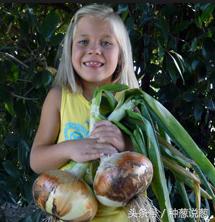
Onion harvest
Fifth, harvest in time
1. Spraying leaves with mh 500mg / kg before harvest can prevent sprouting during storage.
2. Do not water onions 7-10 days before harvest to prevent onions from being intolerant to storage because they absorb enough water in the field.
3. 30% of the aboveground tubular leaves are harvested after natural lodging. At this time, the first and second leaves at the base of the plant are withered and yellow, the third and fourth leaves are still green, the pseudostem is soft and soft, and the aboveground parts lodge naturally. The harvest should be on a sunny day. The main plant was pulled out by root and dried in the field for 1-2 days. The onion was covered with leaves and the head was not sunburned. The yield was 60-90t per hectare. In order to improve the commodity rate, the morning market can also be harvested ahead of time.
Onions marketed on the market require large bulbs, crisp texture, fine structure and good quality. The purchase orders are graded according to the requirements of the order. generally, the transverse diameter of the first-grade bulb is more than 8 cm, the transverse diameter of the second-grade bulb is 6-8 cm, and the inferior bulb is less than 6 cm. Keep the false stem 1-1.5 cm on the bulb, requiring onion to be in good condition, clean surface, no disease, insect, mildew spot, no mechanical damage, no dryness or softness.
Finally, I hope everyone can grow the onions you like, and hope that the onions can be sold at a good price in the coming year.
- Prev
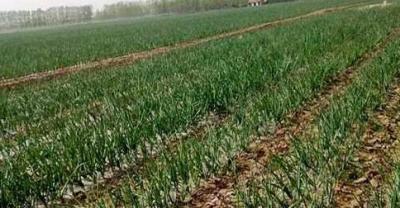
Planting Technology of Pepper vegetables in greenhouse
- Next
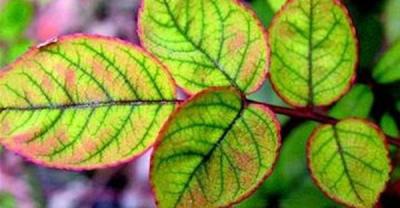
Planting method and Propagation of Flowers-- Plum Blossom
Many types of plum blossoms are not only cultivated in the open field for viewing, but also can be planted as potted flowers to make plums, together with orchids, bamboos and chrysanthemums as "four gentlemen". So how is the plum blossom.
Related
- Fuxing push coffee new agricultural production and marketing class: lack of small-scale processing plants
- Jujube rice field leisure farm deep ploughing Yilan for five years to create a space for organic food and play
- Nongyu Farm-A trial of organic papaya for brave women with advanced technology
- Four points for attention in the prevention and control of diseases and insect pests of edible fungi
- How to add nutrient solution to Edible Fungi
- Is there any good way to control edible fungus mites?
- Open Inoculation Technology of Edible Fungi
- Is there any clever way to use fertilizer for edible fungus in winter?
- What agents are used to kill the pathogens of edible fungi in the mushroom shed?
- Rapid drying of Edible Fungi

